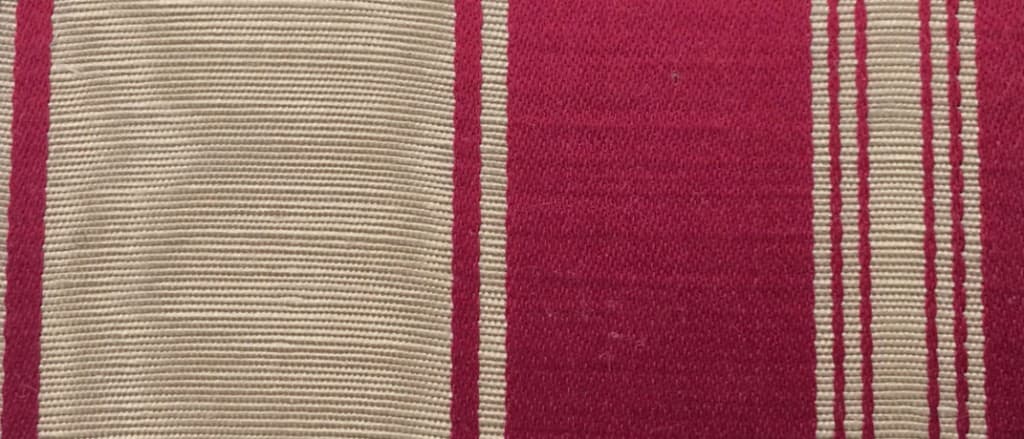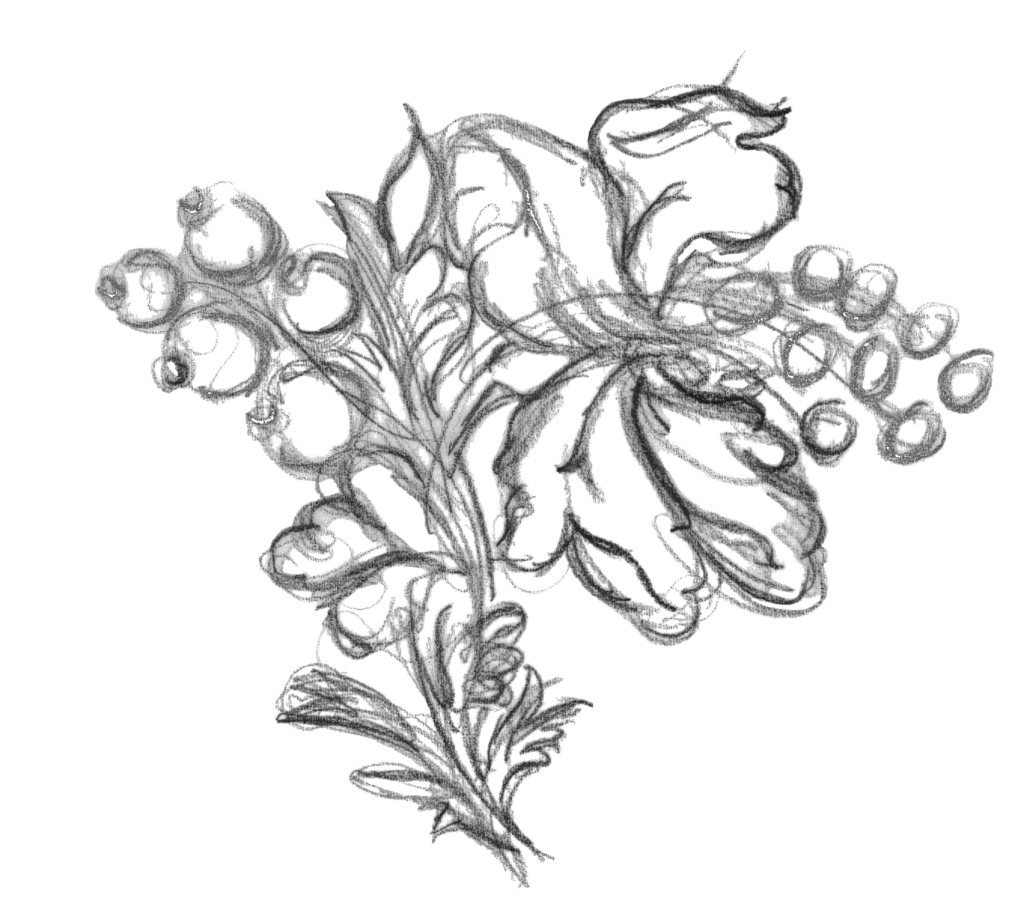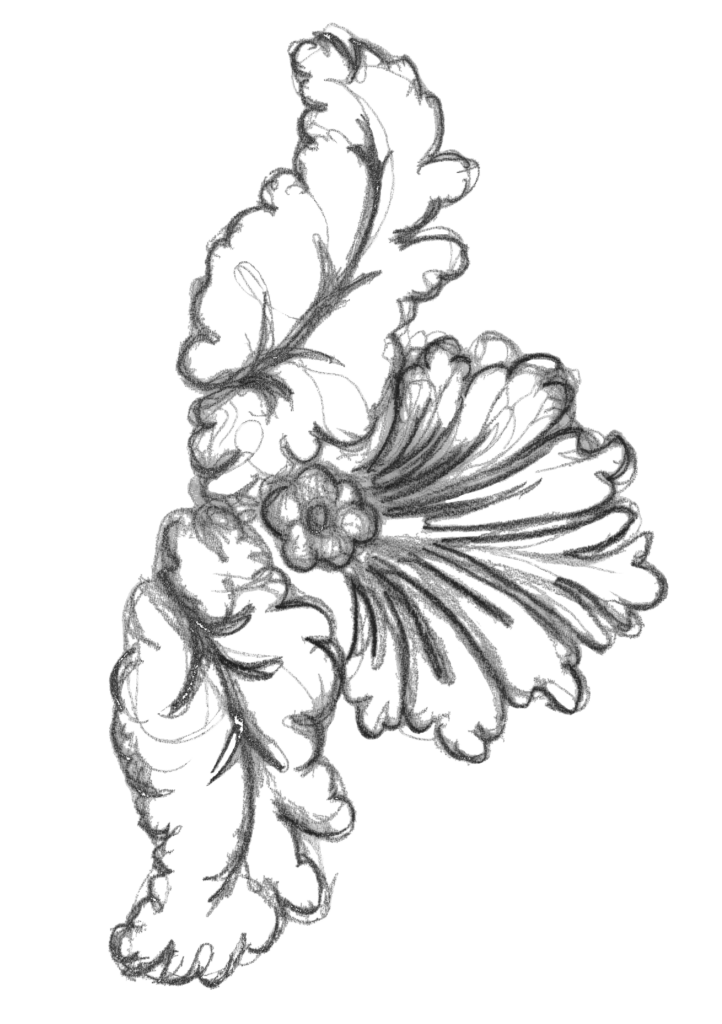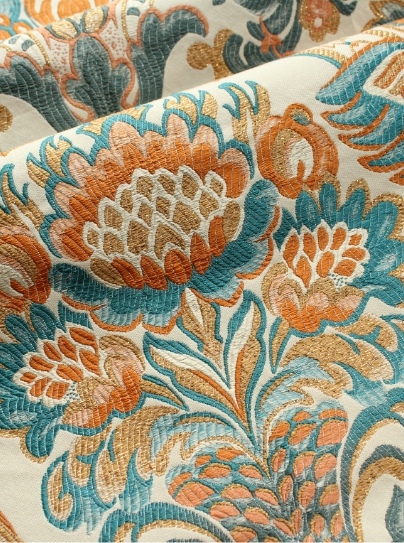The secrets of the dolls house in textile research.
When reproducing historic textiles sometimes we are lucky enough to have the original textile remaining on the walls or the furniture. Even if worn and faded we can often recognise the design and analyse the structure. We will hunt behind hems and seams and under upholstery nails for the tiniest piece of protected original colour. On more than one occassion the dolls house in the nursery has held the key.
When there is nothing tangible left to investigate in the room to be restored then the next place to turn is the house inventory records. The house inventory was often undertaken by the housekeeper or housemaids. They would move through the house room by room listing it’s contents; furniture, fine art, ceramics, porcelain and textiles. Although most could read and write, house staff were not usually formally educated, especially in decorative arts and therefore sometimes the descriptions were not a true reflection. With textiles especially, house records often list terms familiar in dress fabrics such as brocade, when perhaps in reality the textile was a tissue. The same was often the case with colour description being recorded as ‘red’ when there are in fact many different types of red that are much more indicative of the true colour; crimson, brick, rust, wine, ruby, claret or scarlet.
As well as the house inventory, remaining fragments either in situ or held in the house archive, we have on several occassions, discovered the very textile we are researching in the properties dolls house. A dolls house is a house made in miniature and dates from the 16th Century but became particularly popular in the 18th Century on wards. The children of grand families would often have a replica of their own home with realistic exteriors and interiors that used fragments of the very fabrics and papers used to decorate ‘the big house’. The rooms contained reproductions of furniture and accessories.
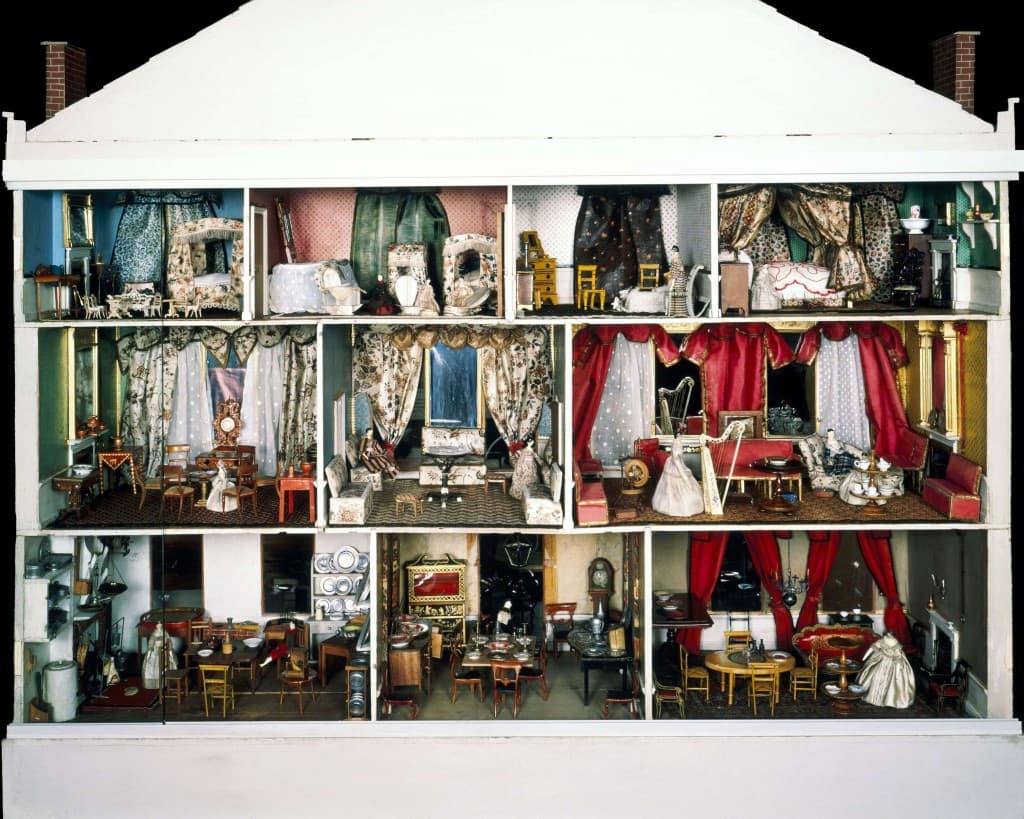
An English Heritage photograph of the Dolls House at Audley End, the second bedroom from the left shows the green moire curtains.
One such example was Audley End House where we were asked to produce fabric for the dining room. The description in the house inventory included phrases such as ‘pull up curtains’ which would usually be referred to as festoons and ‘green watered stripe’. Watering is a finishing effect on a cloth also known as moire. As far as we understand Humphries Weaving are the only remaining weavers that offer this technique and you can read about ‘the art of moire‘ here.
Textile historian Annabel Westman chanced upon the Audley End dolls house and in the second bedroom from the left discovered two tiny curtains. These were moire satin stripe in green and all evidence suggested they were original fabric and exactly matched the description in the house inventory. Humphries Weaving were sent one of the miniature curtains and set about reproducing the exact stripe layout. These ‘pull up’ curtains can now be seen in the Robert Adam dinning parlour at Audley End.
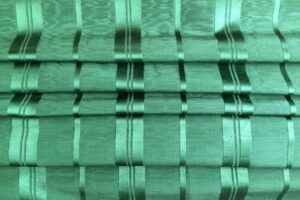
Audley End Dining Curtains Project Ref: 1440
This same stripe layout was subsequently used, in different colourings at Apsley House in the Picadilly Drawing Room and Striped Drawing Room and later at Chatsworth House in the Chinese Bedroom.
In a recent visit to Christchurch Mansion, Ipswich we were amazed to see in their dolls house an exquisitely upholstered mahogany chaise in the same colour and stripe layout as the Queen’s bedroom at Belton House.
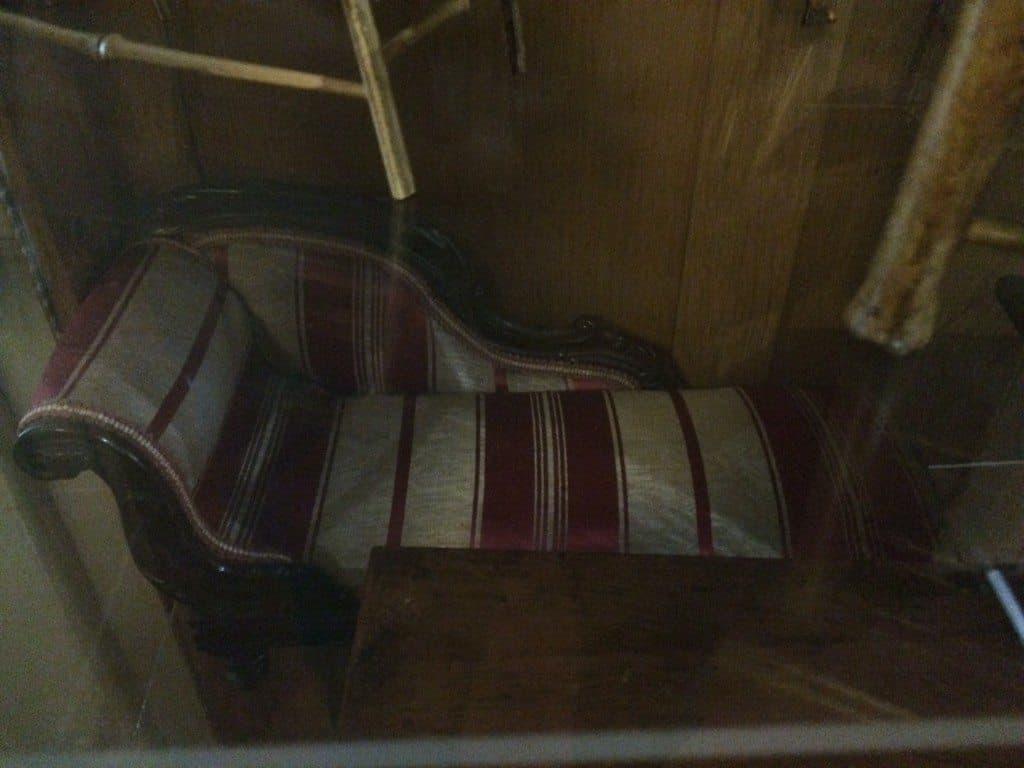
Dolls House chaise from Christchurch Mansion showing the same colouring and stripe layout as the Queen’s Bedroom at Belton House
Next time you visit the nursery of an historic property, don’t pass by the children’s dolls house as there may be treasures inside.
